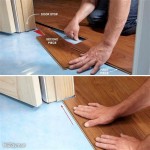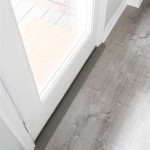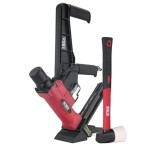Tongue and Groove Porch Flooring Fasteners: Securing Your Outdoor Space
Tongue and groove porch flooring, with its interlocking design and classic aesthetic, offers a durable and attractive solution for outdoor spaces. However, proper installation necessitates the use of appropriate fasteners to ensure secure and long-lasting results. This article delves into the world of tongue and groove porch flooring fasteners, exploring their types, benefits, and installation techniques.
Understanding Tongue and Groove Porch Flooring
Tongue and groove flooring consists of boards with interlocking edges – a protruding tongue on one edge and a corresponding groove on the other. This design creates a tight fit, minimizing gaps and offering stability. When used for porch flooring, it provides a smooth, even surface that can withstand foot traffic and weather elements. The choice of wood species, such as pressure-treated pine, cedar, or composite materials, determines the durability and aesthetics of the flooring.
Types of Fasteners for Tongue and Groove Porch Flooring
Several types of fasteners are employed for tongue and groove porch flooring, each offering unique advantages and considerations:
- Hidden Fasteners: These fasteners are concealed beneath the surface of the flooring, offering a clean and aesthetically pleasing finish. Common examples include:
- Clipped Fasteners: These clips attach to the subfloor and engage with the tongue of the flooring boards, securing them in place. They are often favored for their ease of installation and ability to accommodate slight variations in board thickness.
- Screw-Down Fasteners: These fasteners are driven through the groove of the flooring board and into the subfloor. They are typically concealed by a decorative cover strip, providing a sleek appearance.
- Nail-Down Fasteners: Historically, nails were used to secure tongue and groove flooring. While they may still be employed, hidden fastener systems are generally preferred for their superior holding power and less visible nature.
- Visible Fasteners: These fasteners, typically screws, are visible on the surface of the flooring. While not as aesthetically appealing as hidden fasteners, they can provide a strong and reliable connection.
Choosing the Right Fasteners: Factors to Consider
Selecting the appropriate fasteners for your tongue and groove porch flooring involves several considerations:
- Subfloor Material: The type of subfloor, whether plywood, OSB, or concrete, influences the fastener selection. Some fasteners are designed for specific subfloor materials.
- Aesthetic Preferences: Hidden fasteners offer a clean and modern look, while visible fasteners provide a more traditional appearance.
- Project Budget: Hidden fasteners can be more expensive than visible fasteners, but they provide a premium finish.
- Level of Expertise: Some fasteners, like clipped fasteners, require specialized tools for installation, whereas others, like screws, are easier to handle for DIY projects.
- Climate and Weather Conditions: Consider the climate and weather conditions you are building in. Fasteners must be resistant to moisture and temperature changes to ensure longevity.
Installation Techniques for Tongue and Groove Porch Flooring Fasteners
The installation process for tongue and groove porch flooring varies depending on the type of fasteners used. Common techniques include:
- Clipped Fasteners: Installation involves securing clips to the subfloor and then snapping the tongue of the flooring board into the clips. This method allows for easy adjustment and removal of boards.
- Screw-Down Fasteners: Screws are driven through the groove of the flooring board and into the subfloor. They are pre-drilled to prevent wood splitting and are concealed by a decorative cover strip.
- Nail-Down Fasteners: Nails are driven through the tongue of the flooring board and into the subfloor. This method requires a specialized nailing gun and careful alignment to avoid damaging the boards.
Proper installation techniques are crucial for ensuring the longevity and stability of your porch flooring. A thorough understanding of the chosen fasteners, along with following manufacturer recommendations and proper installation practices, will lead to a successful outcome.

Ipe Tongue Groove Porch Flooring Installation With Trimtite S

Tongue And Groove Porch Flooring Installation Guides

Fixing A Rotten Tongue And Groove Porch Floor The Craftsman Blog

Tongue And Groove Porch Flooring Installation Guides

Fixing A Rotten Tongue And Groove Porch Floor The Craftsman Blog

Fixing A Rotten Tongue And Groove Porch Floor The Craftsman Blog

How To Install Wood Floors With Tongue Groove S

Tongue And Groove Porch Flooring Installation Guides

Fixing A Rotten Tongue And Groove Porch Floor The Craftsman Blog

T G Porch Flooring Ett Fine Woods
Related Posts








